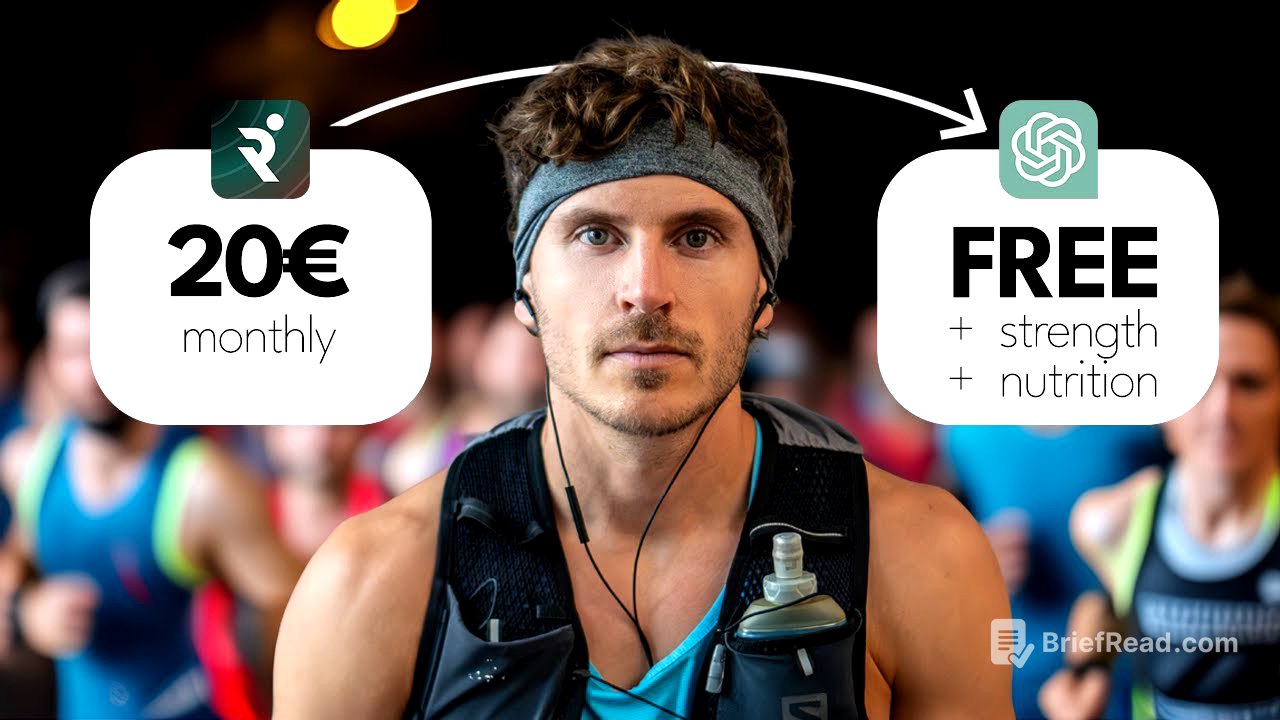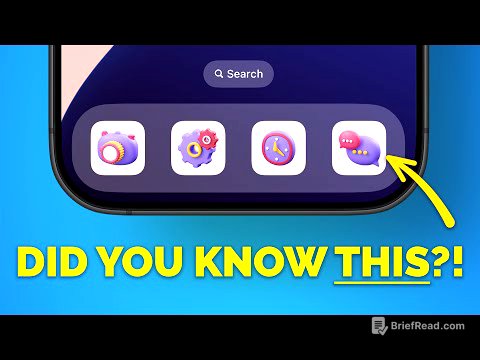TLDR;
This video provides a step-by-step guide on how to create a personalized running training plan using ChatBT for free, which usually costs around €20 per month on running apps. It emphasizes gathering personal running data, inputting it into ChatBT with specific prompts, and structuring the plan into phases with integrated strength and mobility sessions. The guide also covers generating a CSV file for Google Sheets and visualizing the plan in a PDF. Finally, it touches on creating a personalized nutrition plan based on the training regimen.
- Gather running data and input it into ChatBT.
- Structure training plan into phases.
- Integrate strength and mobility sessions.
- Generate CSV file for Google Sheets and visualize in PDF.
- Create personalized nutrition plan based on training.
Gathering Running Data [0:10]
Before using ChatBT, it's crucial to collect running data from the past few months to help the AI understand your training history and prevent overtraining or injury. This involves taking screenshots of important data from your running app, such as training load, weekly mileage, and average sleep time. The data is then transferred to your computer to be used in ChatBT.
Setting Up ChatBT [0:47]
In ChatBT, create a new project to consolidate your running plan, strength plan, and nutrition plan into one chat. This ensures that the AI considers the interdependencies between these elements. Start with the first prompt, acting as your expert running coach and nutritionist, and provide detailed background information, habits, and context. This includes your age, weight, sports background, personal bests, running history, past injuries (especially recent ones), and lifestyle details like sleep, work, and gym habits.
Providing Additional Data and Initial Questions [3:19]
Include screenshots of your past training data from your running app to give the AI more context. Confirm that the AI understands the data and clarify any misunderstandings. Then, prompt the AI to ask you 10 questions to help it perform its mission effectively, covering race-specific details, injury recovery, training preferences, nutrition, lifestyle, and life context.
Creating a Baseline Training Plan [5:04]
After answering the AI's questions, instruct it to create a baseline training plan based on your answers. The AI will generate a personalized weekly training structure based on your running history and goals. This baseline is then structured into four phases: initial, progression, taper, and recovery.
Structuring the Training Plan into Phases [6:01]
Organize the baseline running plan into four phases: initial (building aerobic endurance and preventing injury), progression (increasing intensity with intervals, tempo runs, and long runs), taper (reducing mileage while maintaining sharpness), and recovery (post-race recovery with reduced load and mobility). Outline the weekly mileage progression and key sessions for each phase, explaining the main purpose of each phase.
Integrating Strength and Mobility Sessions [6:46]
Integrate strength and mobility sessions into the training plan, following specific guidelines. Add two to four strength sessions per week, focusing on push, pull, legs, or plyometrics, and ensure they don't precede hard interval workouts or long runs. Include mobility sessions two to six times per week, focusing on weak points like ankles, hips, and hamstrings. Fit these sessions into the existing running schedule without causing overload, and explain the placement of each session.
Visualizing the Training Plan [7:25]
Create a CSV file of the training plan that can be imported into Google Sheets for visualization and customization. Additionally, visualize the plan in a 16x9 PDF document to see all sessions leading up to the race. This allows for easy tracking and adjustments to the training schedule.
Creating a Nutrition Plan [8:54]
Develop a nutrition plan after finalizing the training plan to ensure it aligns with your training needs. Prompt the AI to ask 10 questions about your eating habits and preferences to create a personalized nutrition plan that supports your training goals.









